It is undisputed that Labradors are loved and loved all over the globe. There is much debate about which Labrador color is best.
Black, yellow, and chocolate are the three most well-known Labrador colors. Rare colors like silver, white and red are also possible.
Some Lab owners believe that color can affect their behavior, health, and pedigree status. We share our opinions and provide facts to help you decide which Lab color you like best.
Labrador Colors Explained
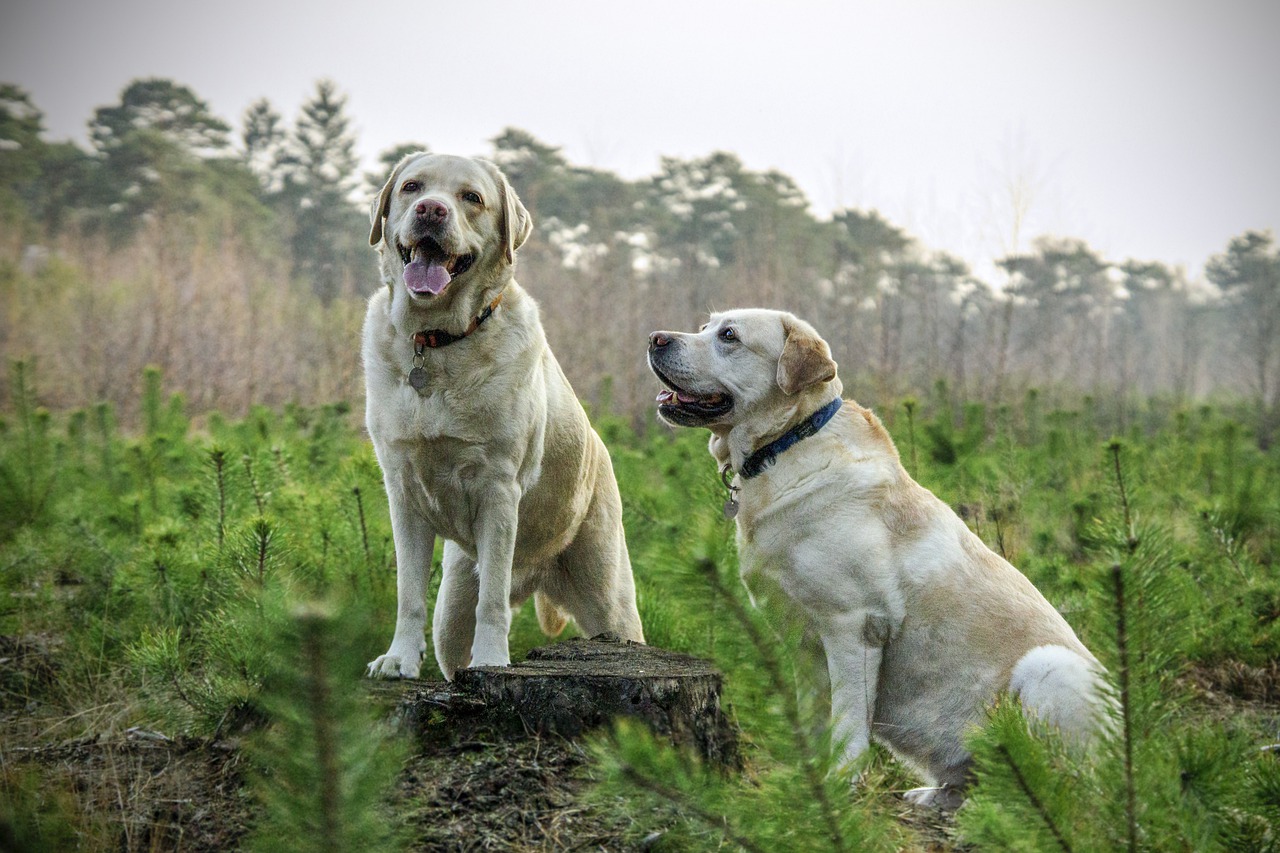
According to the American Kennel Club, there are only three Labrador Retriever colors. These colors are chocolate, yellow, and black. As Labs gain popularity, other colors like silver, charcoal, and red are also recognized.
There are six recognized Lab colors.
- Black Lab
- Chocolate Lab
- Yellow Lab
- Silver Lab
- Red Lab
- White Lab
The science behind the color of coats is complex and depends on many genes.
Eumelanin is a pigment found in the fur of black and chocolate Labs. Eumelanin is what determines the color of a dog’s coat. A dog with a lot of eumelanin is black. Conversely, a dog with a small amount of eumelanin is chocolate.
The B genes determine if a dog produces much or little eumelanin.
The dominant gene, the big B, codes for high levels of eumelanin, resulting in a dark coat. The recessive gene little b codes for low levels of eumelanin, resulting in a chocolate-colored coat.
Two B genes are passed to dogs from each parent. A Lab with Bb or BB genes will have black hair, while a Lab with bb genes will have chocolate.
The E gene determines the color of yellow Lab coats. The E gene is just like the B genes. It contains two genes from each parent. The E genes will decide if the B gene is expressed.
The dominant gene, the big E, is not affected by the B genes. The little e gene, which is recessive, masks the B genes. This masking causes a yellow coat rather than a chocolate or black coat.
Labradors that have EE or Ee genes in their DNA will either be black or chocolate (depending upon their B genes), while dogs with ee genes in their genomes will have a yellow-colored coat.
- Black dogs will inherit the EeBB, EeBB or EEBb genes.
- Chocolate will be provided for Eebb and EEbb dogs
- Yellow will be used for eeBBb, eeBb, and eebb.
Two yellow Labs can be bred together to produce yellow puppies.
Two chocolate Labradors may have either chocolate or yellow pups.
A black Lab can have chocolate, yellow, or black puppies from a pair. Things get more complicated when you mix Labradors and other dog breeds!
The idea of dilute genetics is another complicated aspect of their genes. You can choose to have big D or little D. This is a dominant gene which results in a color that is not diluted.
A chocolate Lab would look like chocolate. A chocolate Lab with dd genes would look like diluted chocolate. In the sun, they appear silver. You can also see this dilution in yellow to make champagne, or in black to create charcoal Labs.
To accurately predict which Lab colors their puppies might be, breeders often do genetic testing on their breeding stock. Some breeders skip this step and opt for beautiful surprises with puppies that can be almost any color.
Labrador Colors
1. Black Labrador
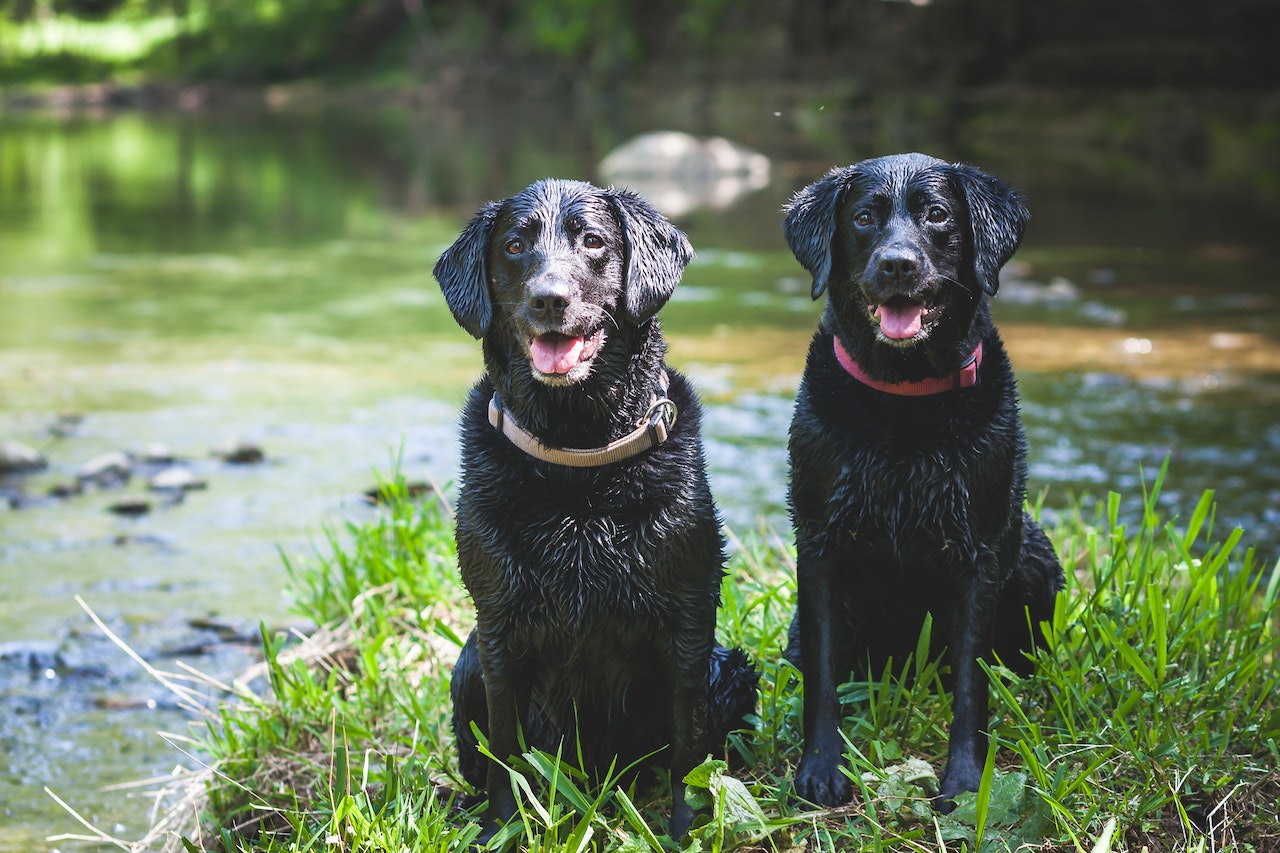
Black Labs tend to be entirely black. Some Labs have a few white spots in their fur, however. Their solid black coats are affected by genetic traces from their St. John’s water dog ancestor. St. John’s water dog had lots of white in its coat.
The black Labrador Retriever was the most popular coat color. Almost half of the Labs today are black
Black-coated Retrievers were considered acceptable when they were first bred. Two reasons drove their popularity:
- Black is the preferred coat color for hunting.
- A black coat is possible with four out of nine gene combinations
Unfortunately, all other Lab colors were euthanized within a few hours of birth until the 20th Century. They weren’t valued as much as black Labradors.
Black Labradors are perfect for hunting.
They were able to blend in with the field and move quietly while hunting or taking part in field trials due to their dark coat. Because of their black coats, these Labs have strong hunting instincts. They are hardworking and focused even today.
These sleek, shiny dogs are beloved by all who see them in action, and they make great pets.
Owners consider black Labs to be the calmest and most affectionate of all Lab colors. This claim is not supported by scientific evidence.
2. Chocolate Labrador

Chocolate Labs are the rarest Lab color. They are not used often for hunting or work, but they are great in the show ring. They are a show-stopper and get high marks at confirmation shows.
There are many shades of brown chocolate Labradors may choose from.
Some dogs are rich in chocolate, while others have a darker brown color called liver. Some dogs even have a gorgeous reddish hue in their brown fur. Genetics can make chocolate colors very different.
Many chocolate Labrador owners make assumptions about their dogs’ personalities that aren’t supported by evidence. Some of these assumptions are now widely accepted by the Labrador community.
Chocolate Labs are the most energetic and rambunctious dogs. They can be spunky and difficult to train which could explain why they aren’t used as service dogs.
These Labs can be a bit playful and naughty sometimes, but they are still loved for their affectionate natures and silly personality.
Unfortunately, chocolate Labradors are more likely to have health problems than other Labs.
These health issues can be minor, such as hot spots ( skin irritation), and ear inflammation. Some are more serious and may shorten their lives. Average lifespan of chocolate Labs is 10% lower. They live an average of one year and a quarter less than other Labradors.
3. Yellow Labrador
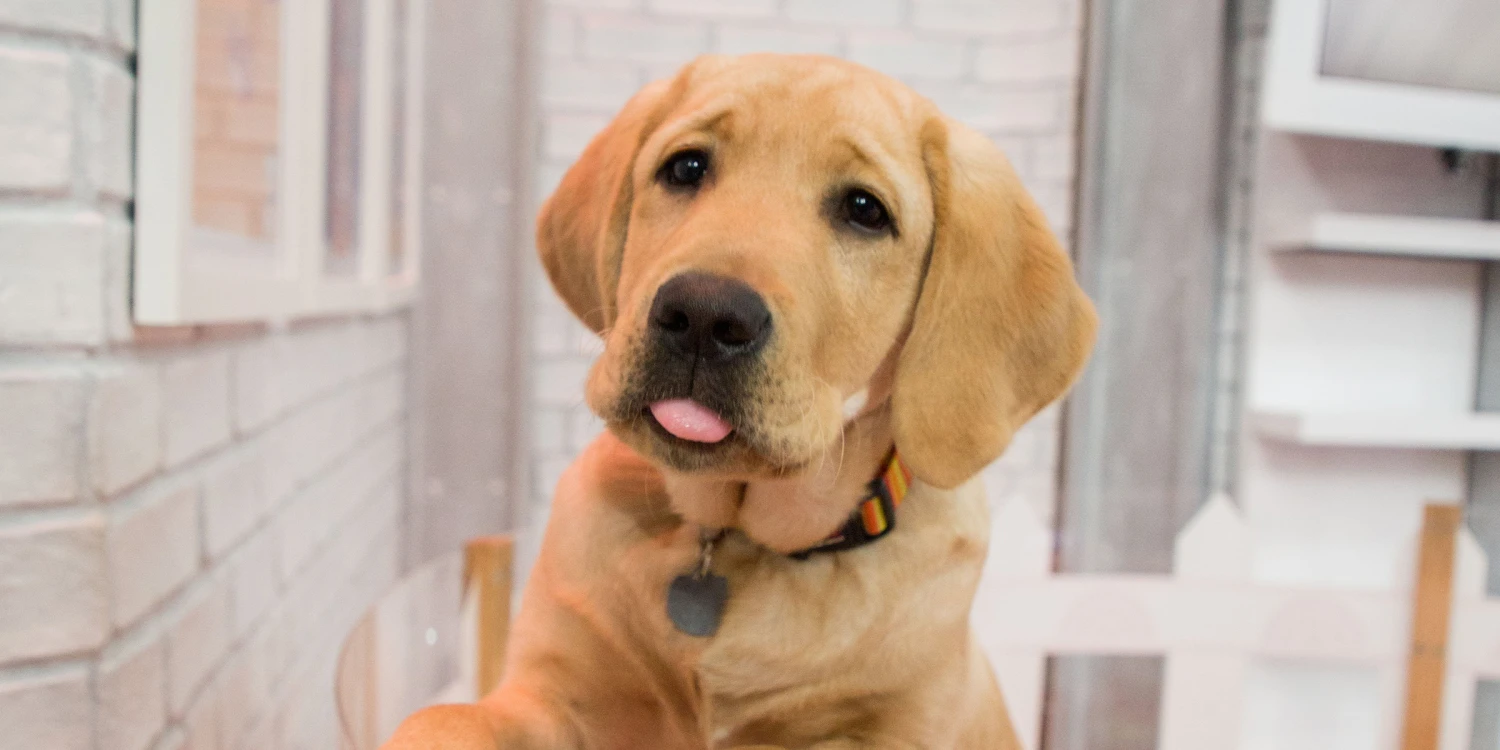
Although yellow Labradors are not the most popular Labrador Retriever colour, they are still the most loved. Yellow Labrador owners are often adamant that they are the most friendly and outgoing.
Their presence in everyday life only adds to their outstanding reputation!
Yellow Labs are often featured in movies, such as the cute Lab who played Marley and Me and the sweetheart who played Old Yeller. Their popularity has been boosted by the media as well as their recognition as therapy, search and rescue, common service and rescue dogs.
The yellow color of a coat is similar to chocolate.
Yellow Labradors can be light brown, tan or yellow, while others may be yellow like a lemon. There are also cream-colored Labradors. Fawn Labradors are also available. Fawn Labradors are darker than the red ones, but not nearly as dark. The Labrador Retriever with most color variation is the yellow Lab.
Yellow Labs can be just as hardworking as black Labs but are less commonly used for hunting. They look very much like black Labs, are as trainable, affectionate and hard-working, and they are almost identical to them.
4. Silver Labrador
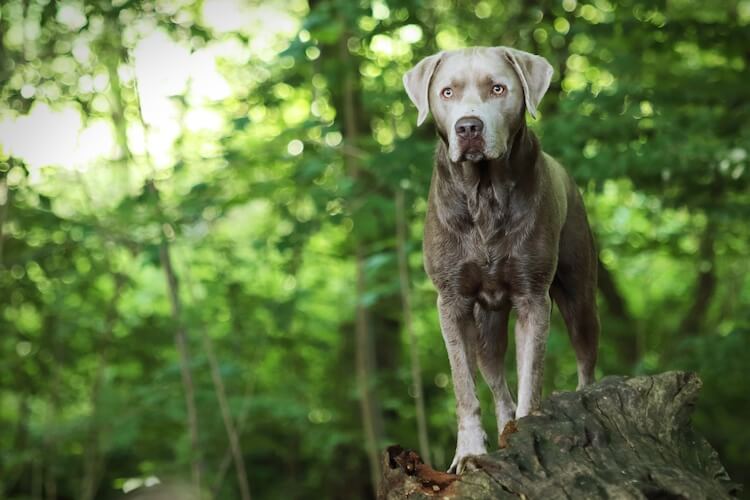
Silver Labradors is the rarest color. These dogs have a light grey to blue color and look silver in the sunlight.
Because of their silver coat, Labradors can often be mistaken for Weimaraner mix dogs.
Silver Labs are actually the same genetics as other Labs, even though they look very different. They are smart, playful, and affectionate just like any Retriever.
Their chocolate-colored coat is overridden by a dilute gene. These dogs are not chocolate-colored but have silvery or blue coat.
The same process can be used to dilution coat colors in both yellow Labs as well as black Labs. Champagne is known for diluted yellow Labs, while charcoal is known for diluted black Labs. Silver is however the rarest. Due to the recessive nature the dilute gene, there are not many silver Labs.
Silver Labs are stunning but have a greater chance of developing health problems. Itchy skin and patchy fur are common symptoms of color dilution.
5. Fox Red Labrador
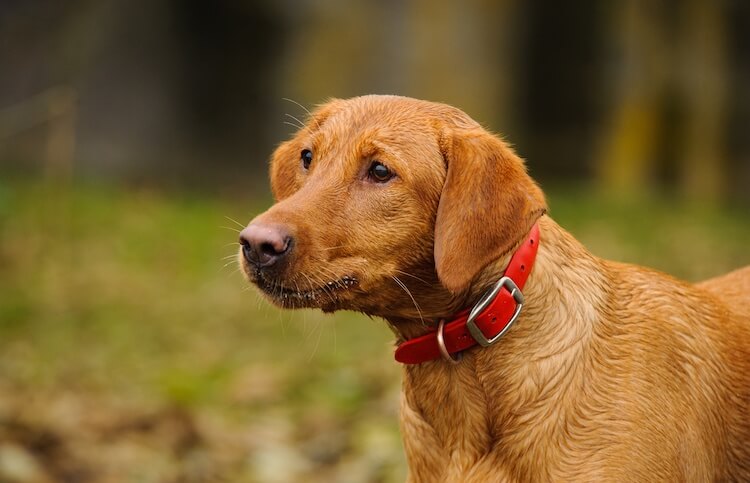
Fox Red Labradors are the same genetics as a yellow Lab but have a deeper yellow or brown color to their coat. This dark brown coat looks almost like a fox and gives them that appearance.
Because of their friendly nature, Labrador Retriever lovers love fox red Labs. These dogs are affectionately called Ruby Labradors by their owners. Clifford, the beloved big-red dog, was even based on a Labrador fox.
Many owners love the rugged look of their red color!
The American Kennel Club is not a part of this love. The American Kennel Club doesn’t recognize fox reds and instead registers them as yellow Labrador Retrievers. Judges view dark pigmentation as a serious defect, so it is unlikely that any fox red Lab will ever win a confirmation show.
Some people are suspicious of the red fox color.
Many argue that fox reds do not come from purebred fox reds and are mixed in with Golden Retrievers. This is false.
Purebred Labs still exist in these beautiful colors. This Labrador retriever has all the beauty and elegance of a Golden Retriever but without the long, sloppy coat that Goldens are famous for.
6. White Labrador
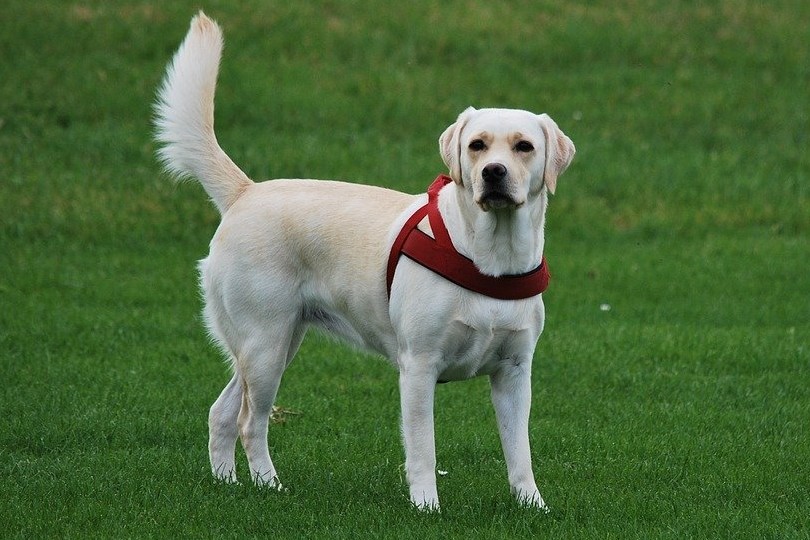
White Labradors can be described as a variation on the yellow Lab. They are the same genetics as yellow Labradors, but they are much paler.
White Labs are The lightest shade of yellow. This color is on the opposite side of the spectrum to fox red Labs. Their fur appears white when exposed to sunlight. Their ears may be yellow or brown, and their paws might be darker than the rest.
They have a royal aura thanks to their white fur.
White Labradors, just like all yellow Labradors, are friendly dogs that love everyone. They are great guard dogs because they get along with everyone and will trust anyone they meet. They are often spoilt beyond belief and often get pampered.
This color is not known to cause any health problems.
White labs are generally healthy as they are a pale yellow and not true white.
Albino Labradors, which are more common and sensitive to bright sunlight, are also less common.
Merle labs could be affected by blindness, deafness or shortened life expectancy.
Most Frequently Asked Questions
Is Coat Color Important?
It can be controversial to discuss Labrador Retriever color.
Are red and silver Labs purebred? Are personality traits different between different colors of Labs? Do silver, red and white need to be classified as different colors?
These questions have complex answers.
Experts and scientists agree that color does not affect a dog’s personality. According to them, behavior is determined by genes, socialization and training as well as health. They believe that coat color is purely cosmetic.
However, some breeders and owners argue that a Lab’s coat color can affect its personality.
They have experienced the joy of raising Labs of every color and their owners and breeders. According to them, coat color is linked with personality traits. These Lab-lovers agreed that:
- Black Labs are calmest and most skilled in hunting.
- Yellow Labs are friendly and good with children and people.
- Chocolate Labs are energetic and the most difficult to train.
Science aside, Labrador Retrievers are not affected by color.
Breeders and owners have documented the behavioral traits associated with each color of coat.
You decide whether the color is important for Labrador Retrievers.
Which is the Most Popular Color?
The rarest Lab color is silver. Because silver is rare, it must be derived from a specific genetic makeup. This recessive gene is responsible for producing the silver color. It is often obscured by genes that give rise to a chocolate coat.
You may be the only person to ever see these beautiful silver beauties.
Which color is the best?
This is definitely an opinion-based question with no right answer.
Every Labrador color suits a particular type of owner.
- A black Lab is the best choice for hunters and athletes.
- Yellow Lab owners say their dogs are the best because of their friendly personalities.
- Chocolate Labs wins the most conformation show prizes.
- Silver Labs are rarest to make the argument more complicated.
Each owner can choose the color they like best. Each Labrador color can have its own argument as to why it is the best.
Which Lab Color is The Most Calm?
It is widely believed that black Labradors are the calmest. It could be due to their hunting instincts, which make them more focused and level-headed.
Chocolate Labs that parade around the show rings in their chocolate labs are often the most boisterous.
Ask the experts and you’ll find out that Labrador behavior is not affected by coat color. According to experts, each Labrador’s personality is shaped by their environment, genetics, training, socialization, and environment.
You might hear a different story if you visit Labrador Retriever forums and websites, or speak to Lab owners.
It is up to you to decide whether you believe this claim. The claim that black Labradors are calmest is not supported by any scientific evidence.
Summary
Every Labrador Retriever color is unique and beautiful in its own right. Silver Labs can be rare, while black Labs look elegant and sleek, yellow Labs exude kindness and elegance, while red Labs work hard and are dedicated to their work. Chocolate Labs, on the other hand, are beautiful and ready for a show!
Experts claim that color does not affect a Lab’s personality. Experts believe that genetics, socialization, and training are key factors in determining a Lab’s behavior.
Labrador coat colors show that beauty is all around us.